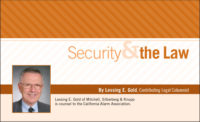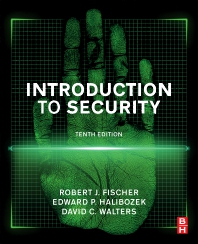In a recent decision, the United States District Court set forth the necessary elements to justify granting a motion for summary judgment.
In the case at hand a woman residing in Hawaii who was in possession of the defendant’s medical alert system, which included a pendant device, died. The personal emergency response system (PERS) was intended to allow the user to seek assistance by pressing a button to facilitate contacting emergency services.
The deceased woman’s daughters filed suit alleging a multitude of claims against the defendants who developed and distributed the PERS devices and services. The defendants filed a motion for summary judgment asserting that there was no evidence their actions or omissions caused or contributed to the death of the woman. The equipment was not sold to the user, but was leased pursuant to a monitoring agreement, the terms of which were never brought up in the discussion.
In deciding the case, the court determined there was no admissible evidence that the decedent pressed any of the buttons on her medical alert system, nor was there evidence that a call or message was received by the defendants from any of the medical alert devices in the decedent’s possession.
The court pointed out that summary judgment is appropriate when there is no genuine issue as to any material fact and the moving party is entitled to judgment as a matter of law. The moving party must show, however, that there is no genuine issue of material fact and that he or she is entitled to judgment as a matter of law.
The burden is met by pointing out to the court that there is an absence of evidence to support a non-moving party’s case. The court views the facts in the light most favorable to the non-moving party.
The court, in discussing the case, pointed out that a claim for Breach of Good Faith and Fair Dealing fails as a matter of law because Hawaii law only recognizes such a claim in the context of insurance contracts, or where there exists a special relationship involving fiduciary responsibility, public interest or an adhesion, which does not exist in the present case.
With reference to the allegation that the decedent’s death was caused as a result of the purported failure of the defendants’ products, there was no evidence to support the plaintiff’s theory.
With reference to the breach of warranty claims, the court indicated that it requires evidence that the defendants’ product failed and caused harm.
With reference to the issue of causation, i.e., requiring proof that defendants’ conduct was the legal cause of plaintiff’s injuries, the court indicated that under Hawaii law, in cases of negligence, plaintiffs must show that the defendants’ conduct was a substantial, as opposed to a negligible or trivial factor in causing the harm.
With reference to the breach of warranty claims, the court indicated that it requires evidence that the defendants’ product failed and caused harm. The court pointed out there was no evidence that there was any action or omissions of the defendants that were a substantial factor in causing the decedent’s death.
Further, there was no evidence that the defendants’ products failed and that such a failure caused or contributed to the decedent’s death.
The plaintiffs submitted affidavits stating that they believed the decedent would have tried to use the defendants’ devices, but the court indicated that there is no evidence to support that claim. The plaintiffs’ statements were merely speculation, included hearsay and did not provide admissible evidence to create a genuine issue of material fact.
The court further pointed out that even if it assumed that the defendants’ products failed, the plaintiffs cannot demonstrate that the purported failure of the products substantially contributed to the decedent’s death.
The court pointed out that the defendants’ products do not guarantee that a user will not suffer any harm or death, even if they successfully use the devices to contact emergency services. The defendants’ products merely assist a user to contact an operator. There must be evidence to demonstrate that the decedent would not have died without the failure of the defendants’ products and there was no such evidence in the case. Therefore the motion for summary judgment was granted.
It should be pointed out that nowhere in the case did it ever refer to a limitation of liability in the contract between the decedent and the defendants. One wonders if the court would have granted the summary judgment without having to discuss any of the above issues if there was a limitation of liability provision in the contract and if it was properly raised.








